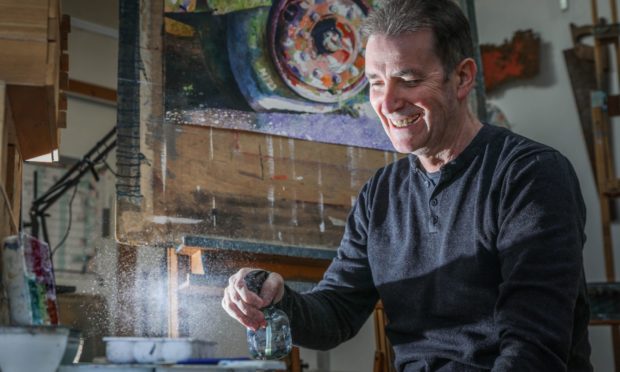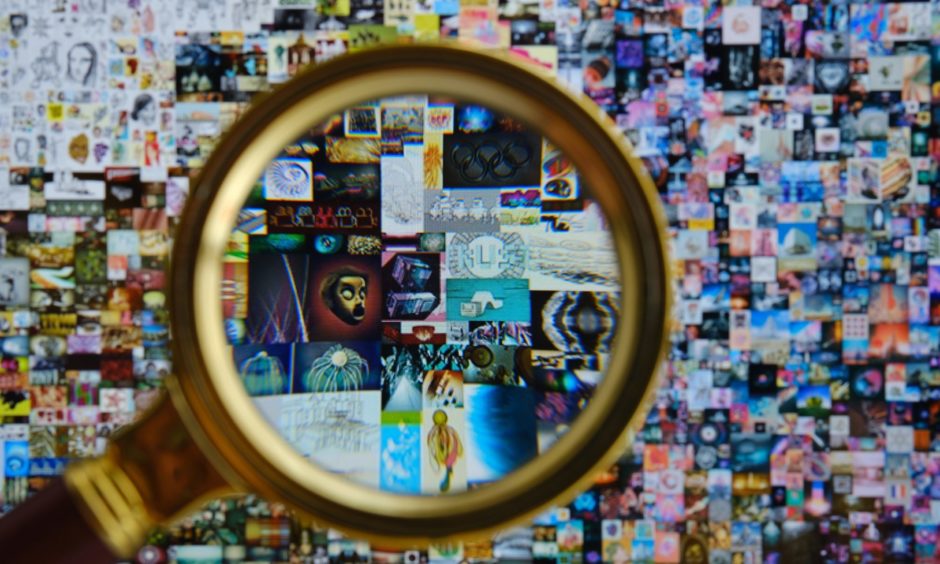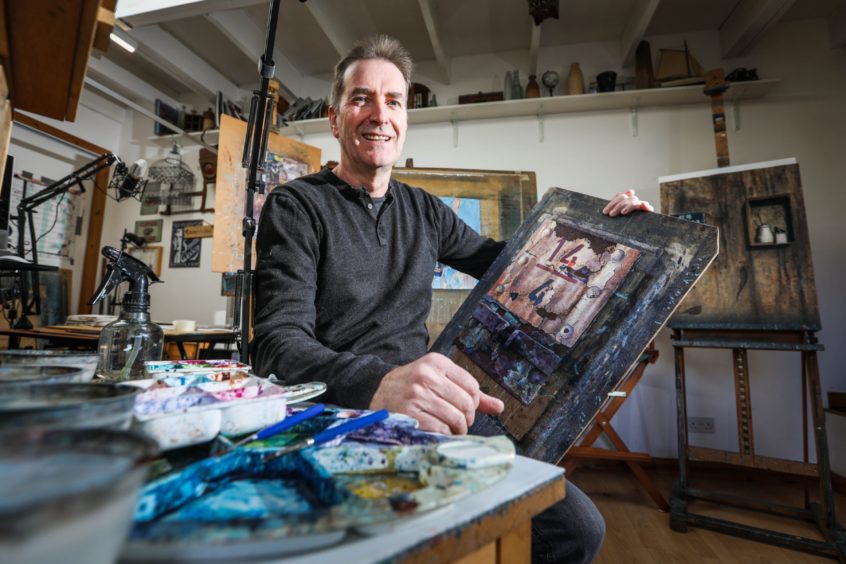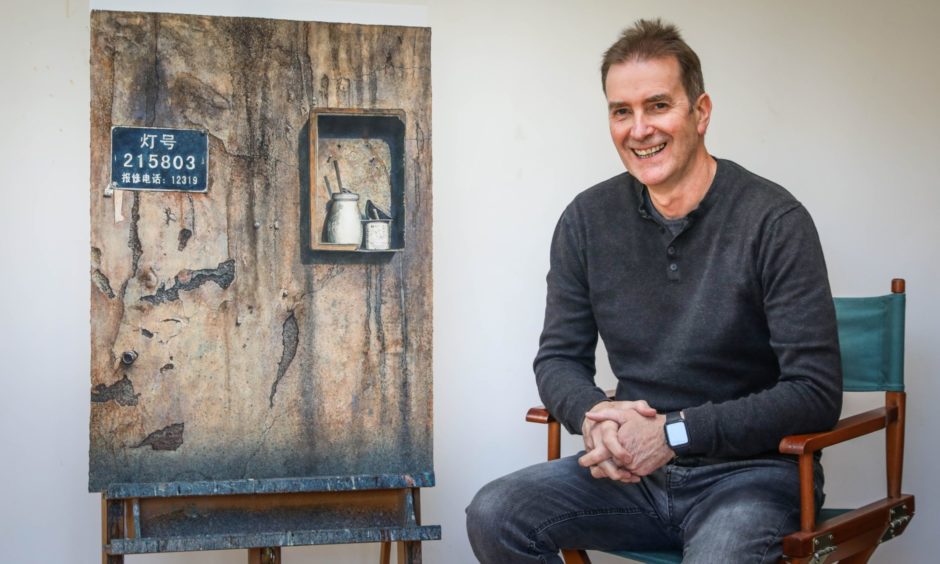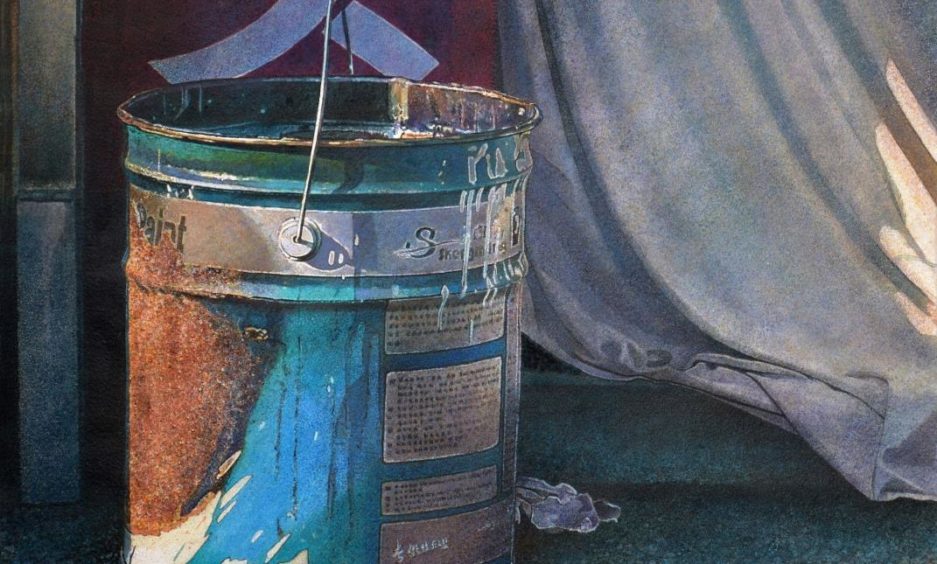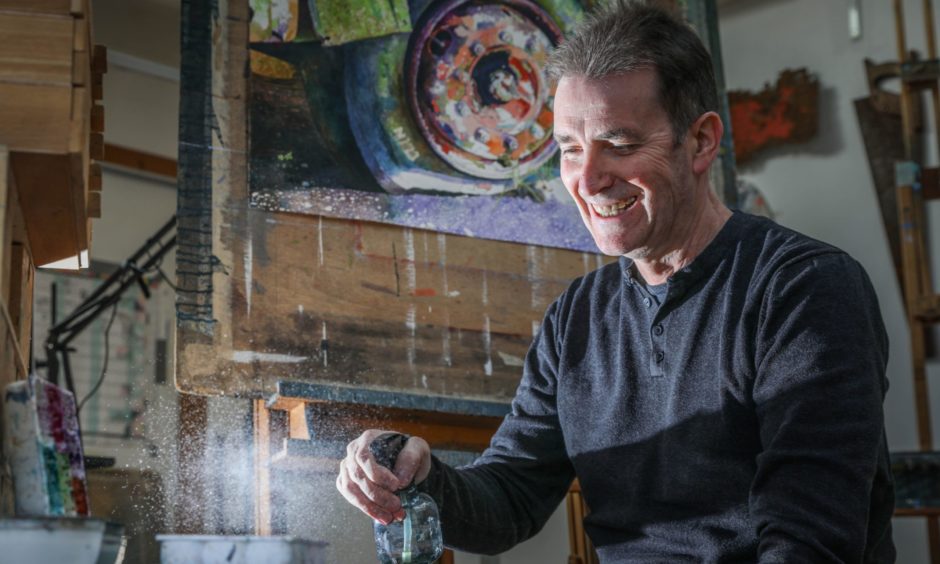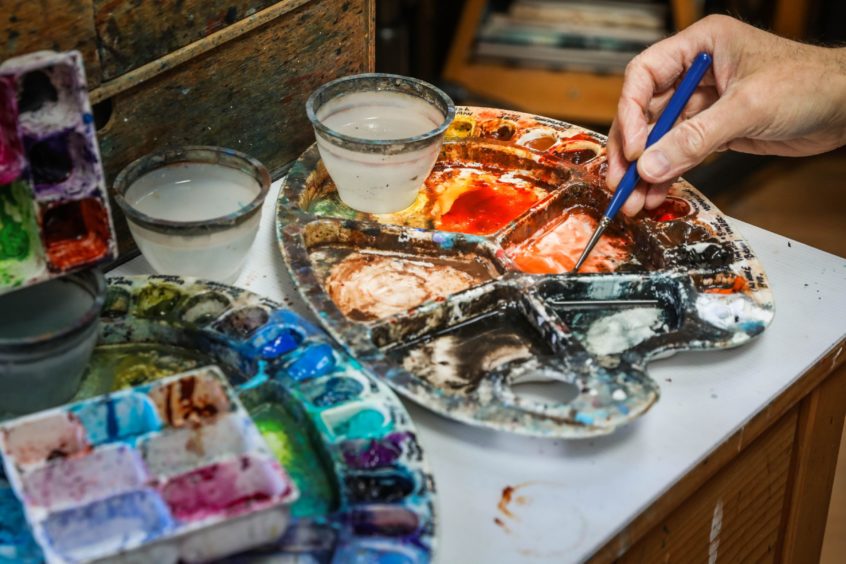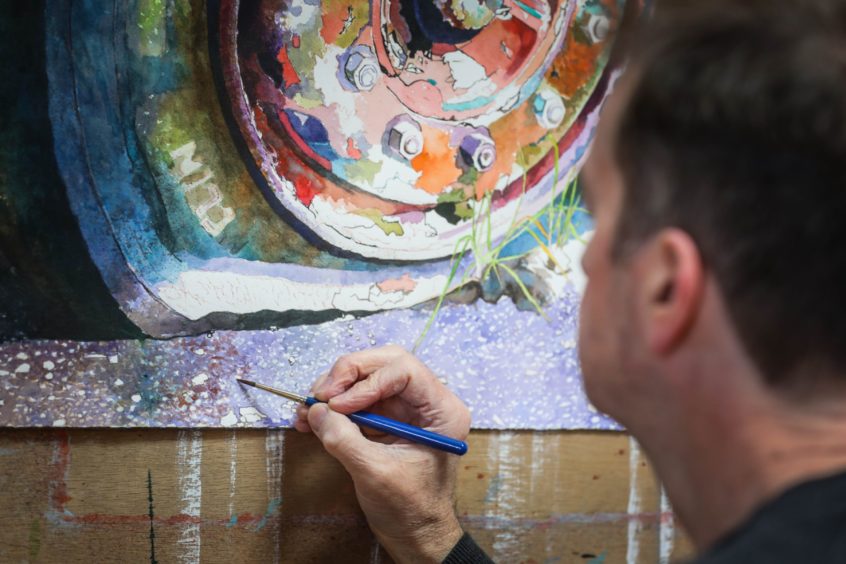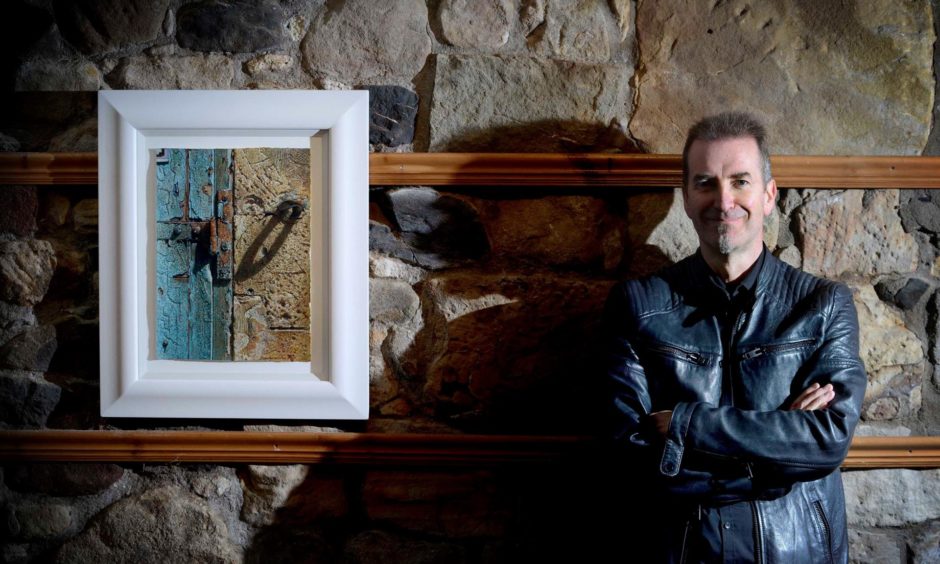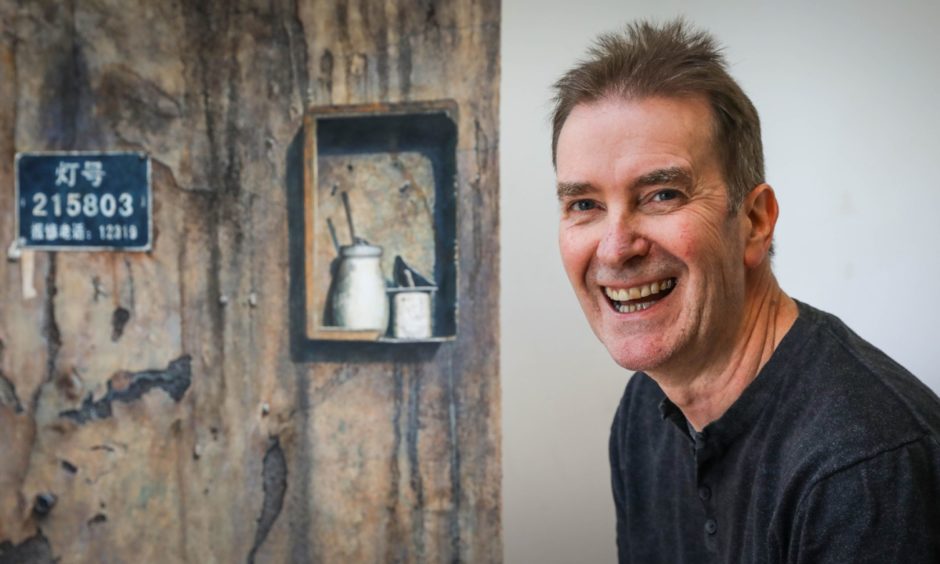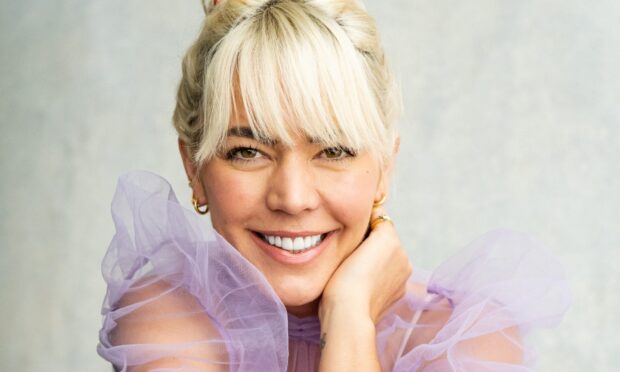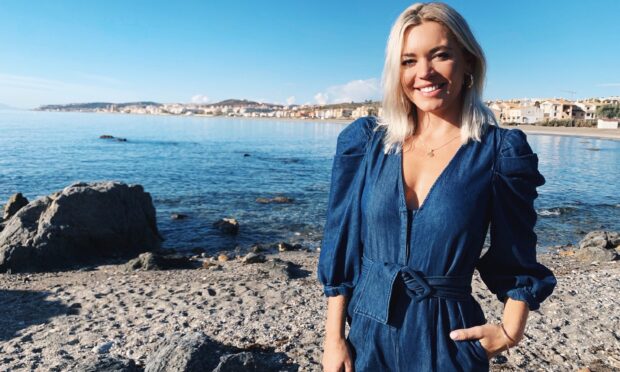Do you know your fungibles from your non-fungibles? Wormit watercolourist Angus McEwan is joining artists like Damien Hirst in a digital revolution.
From displaying a urinal in a gallery to a canvas being shredded at auction in front of stunned onlookers, the art world is anything but dull.
The most recent craze is selling unique pieces of data called NFTs instead of physical works of art.
“I have been watching it for a little while and I thought maybe it’s time to dip the toe into the market,” says Angus. “It might die and death but I think nothing ventured, nothing gained.”
What is an NFT?
NFTs – or non-fungible tokens, if we’re being formal – are not the kind of things you’d find hanging on the walls of an art gallery. They are coded references to unique virtual goods, designed to give the owner something rare that can’t be replicated.
Last month, a digital artwork and NFT by artist Beeple – whose real name is Mike Winkelmann – was auctioned for nearly 70 million dollars (£50.5 million) making it the most expensive digital artwork ever sold.
“Beeple printed out a digital screen with the token in there and then you could display that,” explains Dundee-born Angus. “Damien Hirst is doing 10,000 pieces, I believe, and I’m quite interested in that.”
One of Scotland’s leading painters in watercolour, Angus’s favourite subjects are abandoned and decaying objects and places. His works are so vibrant and intricate that often people don’t believe he uses watercolour.
Angus studied at the Dundee’s Duncan of Jordanstone College of Art and Design and teaches part-time at Dundee and Angus College as well as online.
Crytpo art
It may sound like something out of a Superman film but crypto art, just like real art, can be bought, owned and sold. You can verify it is authentic by using an NFT.
“A non-fungible item is a piece of code that sits on the blockchain,” explains Angus.
The blockchain database digitally records information in a way that makes it difficult change. Cryptocurrencies like Bitcoin and Ethereum use similar technology.
“I saw a description saying it was like a ledger,” says Angus. “On the ledger there are items of information that pertain to a particular thing. Also on that page is a description of what went on previously, so that’s why it’s a chain.
“By having it on the blockchain there is only one of it and it can’t be replicated or forged. It then becomes rare.”
Angus has no idea if this art bubble is going to burst any time soon, but he’s continuing to do his research. In addition, he’s keeping a close eye on an Edinburgh-based artist called Trevor Jones, who has also embraced the world of NFTs.
“Apart from Trevor, I haven’t seen many fine artists doing it. Most of it is digital artists because with a digital art piece, there is no physical thing. It’s a good way to help sell it.
“I’m just trying it out – I have only been doing this for a few weeks so who knows how it will pan out. There are four pieces on my website and I’ve got other ideas.”
I have been watching it for a little while and I thought maybe it’s time to dip the toe into the market.
Back in the real world, Angus recently reached the final of American art prize the Plein Air 10th annual salon. Sadly, he didn’t make it to the top 25 ahead of the awards ceremony this weekend.
His shortlisted painting, Shanghai Street Life, was inspired by something he spotted on a 2019 trip to China. He travelled there to be inducted into the International Masters of Watercolour Association.
Angus explains: “It’s exactly the way we came across it when we were walking along the streets. I found this little plastic cover that had been ripped off and somebody had put a couple of pots in there – a milk pot and a little yoghurt tub.
“I couldn’t believe it when I saw it. It was just perfect.”
From the same trip, he produced another prize-winning piece called Paint Splash of a rusty, abandoned pot of paint.
Fresh as a daisy
Angus reckons people think watercolours are easy to use because it’s a “go-to medium for those who are starting out”.
But the reality is very different: “Unfortunately, sometimes people don’t take it seriously because ‘it’s just watercolour’ but it can be done as a fine art piece. It’s just as challenging. In fact, in some ways, you need a lot more skill.”
Angus also reveals works in watercolour can age well, with some still looking “as fresh as a daisy” after 500 years.
The advice is simple: “As long as you look after them and don’t put them in the conservatory, they will be fine.”
